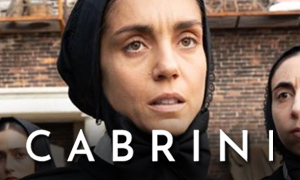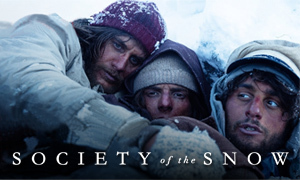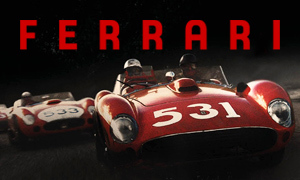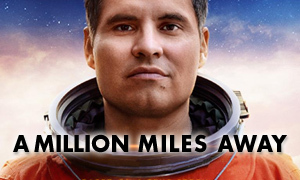Concrete Cowboy: History vs. Hollywood
Is Concrete Cowboy based on a true story?
The Concrete Cowboy movie is not based directly on a true story. It is an adaptation of Greg Neri's young adult novel Ghetto Cowboy, which is a fictionalization of the urban African-American horseriding culture in Philadelphia, specifically the Fletcher Street Urban Riding Club (aka the Fletcher Street Cowboys). The father-son plot that unfolds in the movie is fictional.
Is Idris Elba's character in Concrete Cowboy based on a real person?
No. Idris Elba's character, Harp, and his 15-year-old son, Cole (Caleb McLaughlin), are not based on real people. The movie's narrative of Cole getting expelled from his school in Detroit and having to go live with his father, a Black cowboy in Philadelphia, is not based on a true story. The book's author, Greg Neri, described Cole as being representative of many different kids.
Do any of the real Fletcher Street Cowboys have roles in the movie?
Yes. Some of the real-life Fletcher Street Cowboys do make appearances in the film and their true stories are blended into the movie. This includes Black urban cowboy Jamil “Mil” Prattis, who portrays a paraplegic cowboy named Paris in the movie. His character shares an emotional story with Cole about losing his brother. While Prattis isn't paralyzed in real life, his character's account of losing his brother is based on Prattis' own true story.
Ivannah Mercedes, the young actress who plays Cole's love interest in the movie, Esha, is a real-life urban cowgirl and one of the few in the community of urban riders. She says that Esha's story of being an urban cowgirl in the film is based on many of her own experiences. -Time.com
How long has the community of Black cowboys existed in Philadelphia?
The real-life community of Black urban cowboys has existed in Philadelphia for more than a century. Black-owned stables have existed on Fletcher Street for just as long. Some of the origin stories of the Fletcher Street Cowboys that Harp (Idris Elba) and his friends share around a fire in the movie are based on the true story of how Black cowboys came to the city. It is believed that many came as part of the Great Migration, which began in the early 20th Century and saw blacks migrating north for more opportunities, including industrial jobs in cities like Philadelphia. Many brought their livestock with them. Black riders worked driving horse-drawn carriages in the city and delivering goods. They also herded cattle and traveled westward to help settle the frontier.
When trains and automobiles replaced horses as the preferred mode of transportation, many Black cowboys kept their horses in the city, going as far as to save unwanted horses from being put down. Several Black-owned riding clubs, a few of which were located on Fletcher Street in the Strawberry Mansion neighborhood of northern Philadelphia, allowed them to continue to carry on their passion. The current non-profit organization, the Fletcher Street Urban Riding Club, was founded by Ellis 'El-Dog' Ferrell Jr. in 2004. Ferrell had been informally involved with other iterations of the riding club since 1980. He currently acts as the club's riding instructor and its greatest supporter. He has stressed that Idris Elba's character in the Concrete Cowboy movie was in no way based on him.
Historically, were approximately half of all cowboys Black?
This is what is stated in the Idris Elba movie, but during our research into the Concrete Cowboy true story, we discovered that according to the Black American West Museum in Denver, "almost one in three cowboys" were Black. Though the movie exaggerates the number a little, it's still a statistic that is widely unknown and has gone almost entirely unrepresented in movies and TV. In fact, the career of African American Deputy Marshall Bass Reeves is thought to have possibly inspired the Lone Ranger character, a tidbit of information that is referred to in the movie.
Have the Fletcher Street Cowboys helped young people stay out of trouble?
Yes. "[The kids] always had the stables to come to after school instead of being on the street and getting in trouble," says Ellis Ferrell Jr., founder of the Fletcher Street Urban Riding Club. "It taught them to have respect and responsibility: for the horses, their elders and themselves." Ferrell, 82, had worked as a truck driver and used almost all of his earnings to care for the horses. After he retired, part of his social security has gone into keeping the club going. He started the 2004 version of the club as a nonprofit so that he could accept donations to help care for the horses. -Time.com
Did city and animal-welfare officials raid the Fletcher Street stables?
Yes. The real-life incident that is depicted in the movie happened in March of 2008. According to the true story behind Concrete Cowboy, after anonymous animal abuse claims were made, officials from the city and animal welfare (SPCA) raided the Fletcher Street stables demanding that 40 horses be cleared from the area. They claimed that the stables weren't fit for habitation, citing slum-like conditions, including cramped stalls, urine puddles, manure piles, and rats. They seized at least two of the horses, believing they were ill. However, the horses were brought back several days later after vets gave them a clean bill of health. The city bulldozed the century-old stable, makeshift corral and petting zoo. Club members have since disputed the accusations of mistreatment.
Prior to that, the city had seized a group of stables in the North Philadelphia neighborhood of Brewerytown in 2004. 100 horses were displaced as part of an urban redevelopment plan that saw apartments go up in place of the stables. While three of the four stables did pay rent, they were never fully licensed, making their legality dubious. The city had been turning a blind eye. Other stables scattered around the city began to shut down as well. -The Philadelphia Independent
The current club's founder, Ellis Ferrell Jr., was able to secure three lots on W. Fletcher Street in 2015 with the help of a landowner who donated the group his deed. New stables were constructed on the lots and the horses were relocated there in 2017.
Was Concrete Cowboy filmed in the vicinity of the real stables near Fletcher Street?
Yes. The Concrete Cowboy movie was mostly shot in North Philadelphia, including in and around the current makeshift stables close to Fletcher Street. Many of the scenes in the Idris Elba movie were shot in the empty lot across the street from the stables. The lot (pictured below), which is used for riding, grazing and training, has been acquired by the Philadelphia Housing Authority (PHA). They have recently broken ground to build affordable senior housing.
Some of the real Fletcher Street Cowboys served as advisors on the set, while others have roles working in the stables in the movie.
Do any other similar urban Black cowboy groups exist around the country?
Yes. The Compton Cowboys in the southern Los Angeles city of Compton are made up of a group of childhood friends from the 1990s who use horseback riding and caring for horses as a way to mentor inner-city youth. The friends met through a similar organization known as the Compton Jr. Posse, which has been teaching African-American youth to horseback ride since the 1980s. There website's mission statement reads, "The Compton Jr. Posse (CJP) was developed to provide inner-city youth with year-round after-school alternatives to the lure of gang and drug lifestyles."
Link-to-Learn More:
- Fletcher Street Urban Riding Club's Official Website
- Fletcher Street Urban Riding Club's GoFundMe Page







